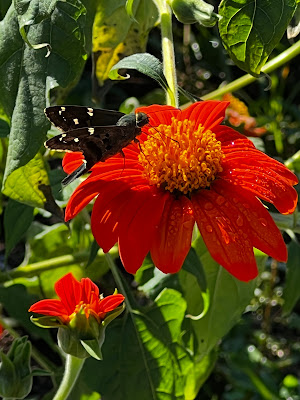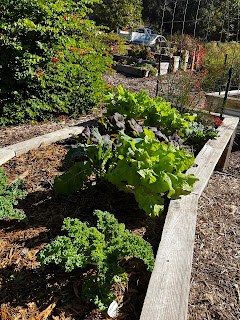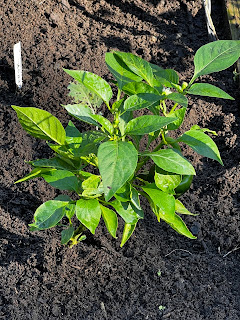A walk around the garden reveals plenty of flowers with butterflies and bees buzzing around. Fall vegetables are thriving in the beds, and cover crops and herbs furnish a variety of greens.
In the forest garden, the loquat tree is healthy and blooming, and Peter’s Hugelkultur bed is cleaned up and mulched for winter.
Loquats are messy, so they are not favored as a landscape tree unless there is plenty of room, but they are perfect for an edible forest garden. They bloom in the fall and bear fruit in late winter and early spring. The falling fruit and leaves just add nourishment to the garden.
Sometimes called Japanese plums, they can be used much the same as plums. They are susceptible to a variety of pests and a few diseases so they should be watched closely and treated so the fruit will remain edible.
Take a walk with us through the garden and join us most any Wednesday for a tour, or to lend a hand.
 |
| Tithonia—Mexican Sunflower visited by a Long-tailed Skipper |
 |
| Winter greens —Lettuce, kale, Mustard |
 |
| This lettuce is amazing. The leaves are as large as kale or collards and still tender. |
 |
| Firecracker plant — Russelia equisetiformis —at the end of a bed. |
 |
| Garlic just emerging. It will be ready for harvest in May or June. |
 |
| Multiplying perennial onions |
 |
| Sugar snap peas |
 |
| Cauliflower |
 |
| Fall version of perennial pollinator garden |
 |
| Hugelkultur bed bordered by yarrow in the foreground and in the rear, a huge grape tomato plant still bearing in November. |
 |
| Thai ginger or Galangal— Alpinia galanga |
 |
| Mexican tarragon, a type of Marigold |
 |
| Buckwheat cover crop |
 |
| Fall peppers |
 |
| Loquat buds |

No comments:
Post a Comment